Agder
South Norway, in Norway called Agder or Sørlandet, is the southernmost region of Norway. The coast of southern Norway (Skagerrak) is often called the Norwegian Riviera. The picturesque towns and the enchanting archipelago is surrounding the Skagerrak - coast, inland is perfect for hiking and the mountains there are good opportunities for skiing in winter. All surrounded by beautiful nature scenery. The climate, particularly along the coast is mild compared to other places in the Nordic countries. Southern Norway has the highest number of recorded hours of sunshine per day in Norway.
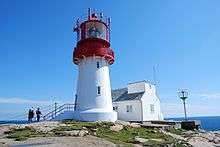
Cities
- 🌍 Arendal – Coastal town
- 🌍 Evje – provisioning before entering Setesdal
- 🌍 Farsund – Coastal town, known for its rich architecture
- 🌍 Flekkefjord – Coastal town in southwest
- 🌍 Kristiansand – Largest city and centre of the area
- 🌍 Lyngdal – A pleasant small town by three fjords
- 🌍 Lillesand – A cozy small coastal town
- 🌍 Mandal – A small town in the souternmost part of Norway
- 🌍 Risør – Coastal town, known for white wood houses
- 🌍 Tvedestrand – Narrow streets lead down to a small harbor.
Other destinations
- 🌍 Den lille dyrehage (Zoo) (Brokelandsheia), Brokelandsheia, Sundebru (By the E18- European Route 18), ☎ + 47 413 59 484. This is a small zoo on the eastern outskirts of Agder. For those who think it's too far to Kristiansand Zoo or can't get enough of animals.
- 🌍 Setesdal – a major valley in midle of the interior from Kristiansand to the uplands at Hovden
- 🌍 Hovden – ski centre in Setesdal
- 🌍 Lindesnes - Norway's oldest lighthouse with a museum on the southern tip (South Cape) of the country.
Understand
.jpg)
The coast is lined with picturesque white-painted wood towns surrounded by lovely archipelago (skjærgård). The south coast is a favorite vacation area for Norwegians in the summer. It's easy to travel between the coast towns. Outside the towns, however, public transport is infrequent.
The inland is less visited, but those interested in trekking to pretty solitary lakes or whitewater activities - or mosquitoes - should give it a try. Relatively lowland of the coast gradually gives way to big valleys and high plateaus and real mountains. The interior and the coast has different character and were in fact separate counties. Due to difficult transport the interior valleys, notably Setesdal, was long relatively isolated from the coast. Setesdal still takes care of its cultural heritage in terms of dialect, music, traditional clothing (for special occasions only) and silverware. Traditional costumes are easily recognized. Setesdal is some 150 km and cuts sharply into the bedrock with characteristic steep, polished cliffs rising abruptly from the relatively flat valley floor. some 40 km of the valley floor is occupied by the Byglandsfjord-Åkrafjord lakes. These are two separate lakes that appear as one. They appear as fjords and are indeed called "fjord" according to naming convention. The river often widens to what appears as lake.
The coast is heated by the ocean and winters are relatively mild, while in the interior winters can be cold and heavy snowfall is common.
Population is concentrated along the coast close to the water where the towns are. In the interior there are only villages.
Agder is divided in two administrative areas - Vest-Agder and Aust-Agder counties, that is, West and East Agder. For the visitor this division has no significance, but road signs will indicate county line.
The western part in particular has strong ties to USA because of emigration and many emigrants that returned. This is most visible in Lista, Vanse, Farsund and Kvinesdal areas. American cars, American diners, "Brooklyn Square" make this the closest one gets to USA in Norway. Many emigrants returned and brought US style houses home, some even with US voltage (120 V). Some 10 % of the inhabitants are US citizens.
Talk
.jpg)
Most people will respond in English to any question you may have. Some Norwegians also speak some German, due to the proximity of the language, and that they study it in school.
Norwegian
- For more information on the most common phrases in Norwegian, see the Norwegian phrasebook article.
The south coast has characteristic dialect with for instance "d" is often used where other Norwegians use "t", while "b" is often used instead of "p". This gives the southern dialect a notable softer tone similar to Danish. Those interested in dialects, can also observe a remarkable difference in Setesdal compared to the Danish-sounding Kristiansand dialect, to the very different north valley dialect that sounds more like Gaelic.
In several inland municipalities, a writing form of Norwegian usually associated with West Norway known as Nynorsk is the official form. Closer to the coast, the general rule is that people tend to speak a dialect more and more similar to East Norwegian dialects the further east you travel. East of Tvedestrand, a rolling r is applied while western areas use the voiced uvular fricative like in French and German.
Get in

By plane
There is one major airport of South Norway: Kristiansand (KRS IATA).There are scheduled flights to four domestic destinations as well as international flights to Alicante, Amsterdam, Copenhagen and London-Stansted. Connecting bus and coach services operate to Kristiansand, Lillesand, Arendal and Grimstad. Beware when getting plane tickets, not to mix up the city with Kristiansund much further north in Norway.
Other airports:
- Skien Airport, located 120 km east of Arendal. Flights only from Bergen. Access by taxi to central Skien and local buses, rutebok.no.
- Sandefjord Torp Airport , located 120 km east of Arendal. International low fare flights. Access by local buses, rutebok.no.
- Oslo Airport, located 300 km northeast of Arendal and 370 km of Kristiansand. Major international airport. See the below how to get in from Oslo.
- Stavanger Airport, located 125 km northwest of Flekkefjord, 230 km of Kristiansand and 295 km of Arendal.
By bus
Coach connections to Oslo and the towns along the western shore of the Oslo Fjord is excellent. Nor-Way Bussexpress [3] has 9 daily connections between Kristiansand and Oslo, Konkurrenten.no between 4 and 7 departures while Lavprisekspressen runs twice daily. You are guaranteed a seat - if the bus is full, the bus company will add an extra bus. Lavsprisekpressen provides online ticketing only. These express buses are usually just as fast as the trains to Oslo. To towns like Larvik, Tønsberg and Sandefjord you might arrive several hours later if you go by train. There's also infrequent express bus connections to Stavanger and up along the Setesdalen, with connections to cities such as Bergen and Haugesund. Regional buses run frequently along the coast, from Lyngdal and Lista in the west to Arendal in the east, run by several different bus companies.
By boat
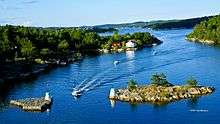
The ferry company Color Line operate car ferries to Denmark, 2 times each day (3 times on Saturday - Monday) to Hirtshals. The trip takes 3 hours and 15 minutes, with the brand new Superspeed ferry operating the route. Prices soar in the summer. Fjordline compete on the same route seasonal from May to August.
By car
The E18 is the main road between the area and Oslo. The road changes its name to E39 when it passes Kristiansand on its way to Stavanger. Route 9 starts in Kristiansand and takes you through the natural beauty of the Setesdal Valley to Haukeligrend on the Hardangervidda (Hardanger Plateau).
By rail
Regional trains connect Kristiansand to other cities and towns along the Southern Railway Line (Sørlandsbanen). Up to 8 trains daily depart for Stavanger, while up to 6 daily trains leave for the country's capital, Oslo. The trip from Kristiansand to Stavanger takes about 3 hours and the trip Kristiansand- Oslo between 4 1/2 to 5 hours. Trains both westwards towards Stavanger and eastwards to Oslo follow an inland route, meaning that travel to the towns along the coast is quite inconvenient by train. From Nelaug station, however, there is a corresponding local train to Arendal. There are lots of nice forest views and rural settlements, though. The train station in Kristiansand is situated right next to the town centre, the ferry terminal, and the bus terminal.
Get around
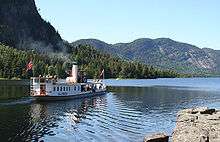
- For more information on driving, see the Driving in Norway article.
On foot, by car, bus, bike, motorcycle - or make your way at sea. Taxi is a rather expensive alternative. Local buses, tickets and info by AKT.
By boat
Travel by small boat among the many small islands and straits is popular. In 2007 the Spangereid canal was created to allow small motor boats a short cut across Lindesnes penninsula. The trip around Lindesnes penninsula is much longer and the open sea can be rough. This canal was originally constructed in the Viking era around year 700, but was at some point abandoned until opened again in 2007.
See


The beautiful landscapes of South Norway
- Norwegian coast of Skagerrak (part of the North sea), also called "The Norwegian Riviera", known for the beautiful archipelago. Suitable for boating, sailing, discovery and swimming in the summer.
- Setesdal and the inland, with forests and mountains, hiking terrain, ski resorts, in addition to lakes and rivers suitable for fishing, rafting, canoeing and kayaking.
- Kristiansand Zoo and Amusement park
- Lindesnes Lighthouse
- Setesdalsbanen heritage railway, Vennesla -8 km preserved steam powered railway that once connected Kristiansand and Setesdal via Byglandsfjord.
Do

- Water based (Boating, Sailing, Diving, Canoeing, Fishing etc)
- Land based ( Hiking, Skiing, Cycling, etc)
- Island hopping
- Steam boat trip with D/S Bjoren on the lake Byglandsfjorden
- Train ride with the Setesdalsbanen heritage railway line
- Visit Kristiansand Zoo and Amusement Park
Eat
Norwegian cuisine is known for eclectic food with a good supply of many local ingredients. Try Norwegian seafood!
- 🌍 Restaurant Under, Lindesnes, ☎ +47 936 28 661, e-mail: post@under.no. Visits to the restaurant must be pre-booked months in advance, due to high demand.. This is the first seafood restaurant below the ocean surface in Norway and one of the first in the world. In addition to the experience, delicious seafood is served.
Drink
Local Norwegian beer, aquavit and cider. Along the Skagerrak coast several local breweries and microbreweries are brewing beer that are definitely worth tasting, although prices are high. Or simply drink clean and fresh tap water.
Stay safe
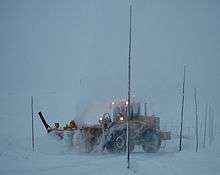
Apart from those associated with outdoor activities, there are few dangers.
Every year there are reports of foreign visitors that get into trouble in small boats at sea, fatal incidents also occur.
The high moor-like plateaus can be difficult to navigate, particularly in bad weather. Map, compass and appropriate clothing are needed on hikes. Weather in the mountains and on the high plateaus can be very different from the coast and low-land weather.

- While the coast is relatively mild, heavy snowfall and difficult driving is common also along roads E18 and E39. Driving in the interior in winter requires skills and experience. In the interior and uplands temperatures can drop to -20° C or lower, January average at Hovden is -10°C. The road from Hovden to Haukeli (junction with E134) is exposed to rough weather and can get closed in winter. Winter tires are recommended from November to mid April, but studded winter tires are not allowed outside the winter season. Bring plenty clothes and something to eat and drink during winter drives particularly through the uplands and interior.
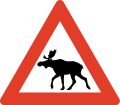
- Moose ("elg"), row deer ("rådyr") and grazing sheep are relatively common in the forest areas of Agder. Drivers should be cautious at dusk and dawn where road runs through pine forest.
☎ Emergency numbers
.jpg)



- For non-emergencies, the police is to be called on ☎ 02800 or Agder Police District at ☎ (+47) 38 13 60 00.
- The hearing impaired using a text telephone can reach the emergency services by dialing ☎ 1412.
- Roadside assistance is provided by Falck (☎ 02222) and Viking (☎ 06000). AAA members may call NAF on ☎ 08505.
Go next
- Rogaland with Stavanger in the west.
- Hardanger and southern Hordaland through Setesdal
- Telemark - mini-Norway
- Denmark